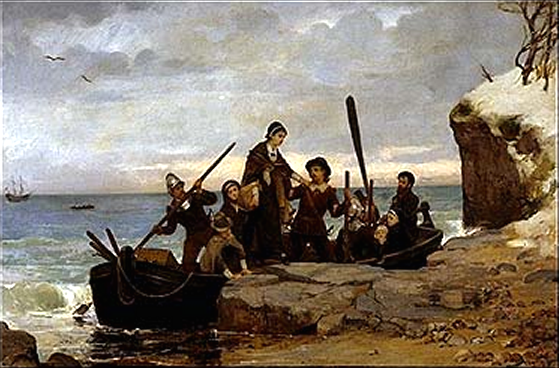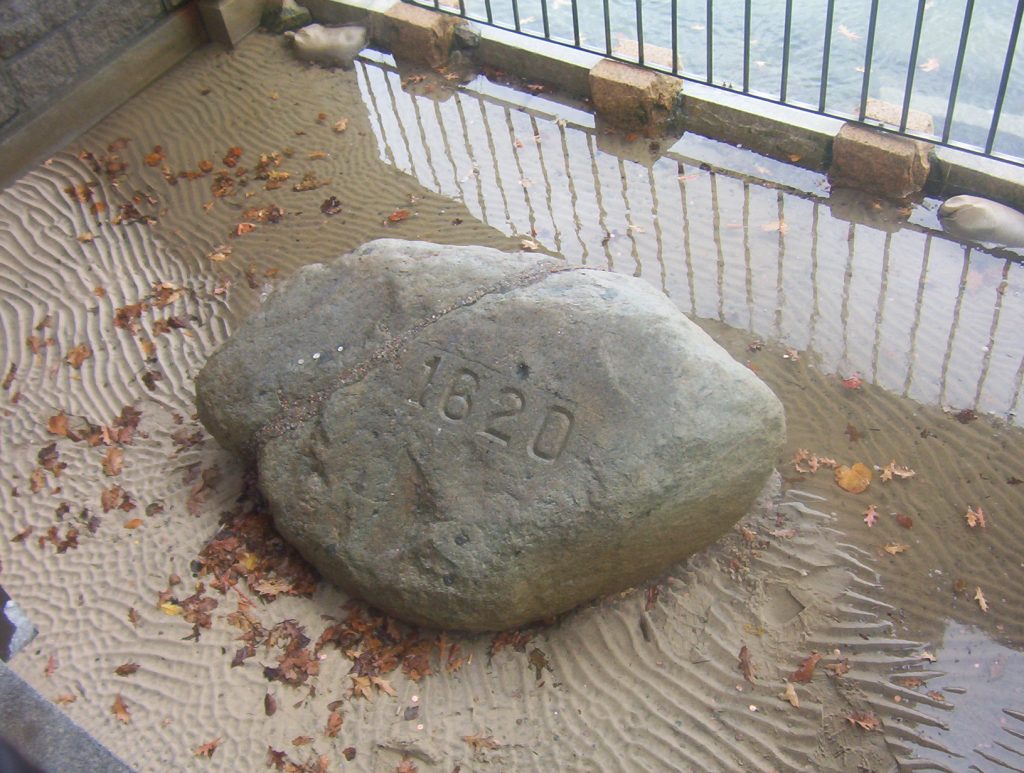This article was published in Scientific American’s former blog network and reflects the views of the author, not necessarily those of Scientific American
Plymouth Rock is one of America's most enduring myths. We get told from childhood that the Pilgrims landed there (they didn't), and then there's a bunch of nonsense about how they were starving (they weren't), and the Indians saved them that winter (they didn't actually meet until spring), and the Pilgrims were sooo grateful they threw a big harvest banquet with the Indians that fall (the Wampanoag weren't actually invited - they came to check out what all the shooting was about).
Fact is, nobody really cared about Plymouth Rock for about 120 years, until a misty-eyed old gent informed everyone that the Pilgrims had shown him the exact rock upon which they had stepped when they first arrived. Everybody trooped down to the beach, carrying the near-centenarian with them, and had him point out the stone, over which he wept, and an American legend was born.
I got told the story of Plymouth Rock over and over as a child, but nobody ever actually explained what the rock was. I had in mind a huge boulder, and I couldn't really picture how or why people would use it to get off a boat. Turns out they probably used a rather nicer natural port, but plenty of artists have envisioned the momentous occasion of the first English foot stepping upon the rock, which reports say made something of a natural pier. Like so:
On supporting science journalism
If you're enjoying this article, consider supporting our award-winning journalism by subscribing. By purchasing a subscription you are helping to ensure the future of impactful stories about the discoveries and ideas shaping our world today.
-

The Landing of the Pilgrims by Henry A. Bacon. Credit: Public Domain
No one ever told us anything about the rock itself: all the focus was on the people who stepped on it. But we lovers of the good science of rock-breaking know every stone has a story. Plymouth Rock is no different. And, like the Pilgrims associated with it, it's an immigrant.
This bit of Dedham Granite grandiorite began life around 630 million years ago as part of Gondwana. It traveled with Gondwana to become part of the supercontinent of Pangea, rather like the Pilgrims first living in Holland before coming to America. Plymouth Rock found itself on the American side of the great rift when Pangea split apart and the Atlantic Ocean was born: you can't say it crossed an ocean, exactly, as the ocean didn't actually exist, but it certainly got to watch the Atlantic form. And, like the Pilgrims, it initially spent its time in another part of the continent before landing at Plymouth. Unlike them, however, it spent millions of years in its new home before moving on.
So what could move a boulder that, before folks reverently began moving bits of it into monuments and chipping other bits off as souvenirs of an event that never happened, weighed 20,000 pounds and was at least fifteen by three feet? What could carry it hundreds of miles from eastern Massachusetts or Rhode Island to the coast?
I'll give you a hint, but you'll possibly hate me for it.
This is my favorite thing about Plymouth Rock: it's a glacial erratic. Twenty thousand years ago, it got plucked up by the great glaciers that covered huge bits of North America, rafted considerable distances, and then deposited on a coast where human history would be made a long time later. And then the poor thing got busted up and distributed to various monuments and museums because some old dude said some immigrants walked on it once.
You can see pieces of it in many places in New England. This is the portion left at Plymouth, now housed in a fancy open-sided building with the date of the landing carved into it.
-

Plymouth Rock. Credit: Christopher Schmidt (CC BY 2.0)
Now you know the geological story of Plymouth Rock. Be sure to check out the human history as well!